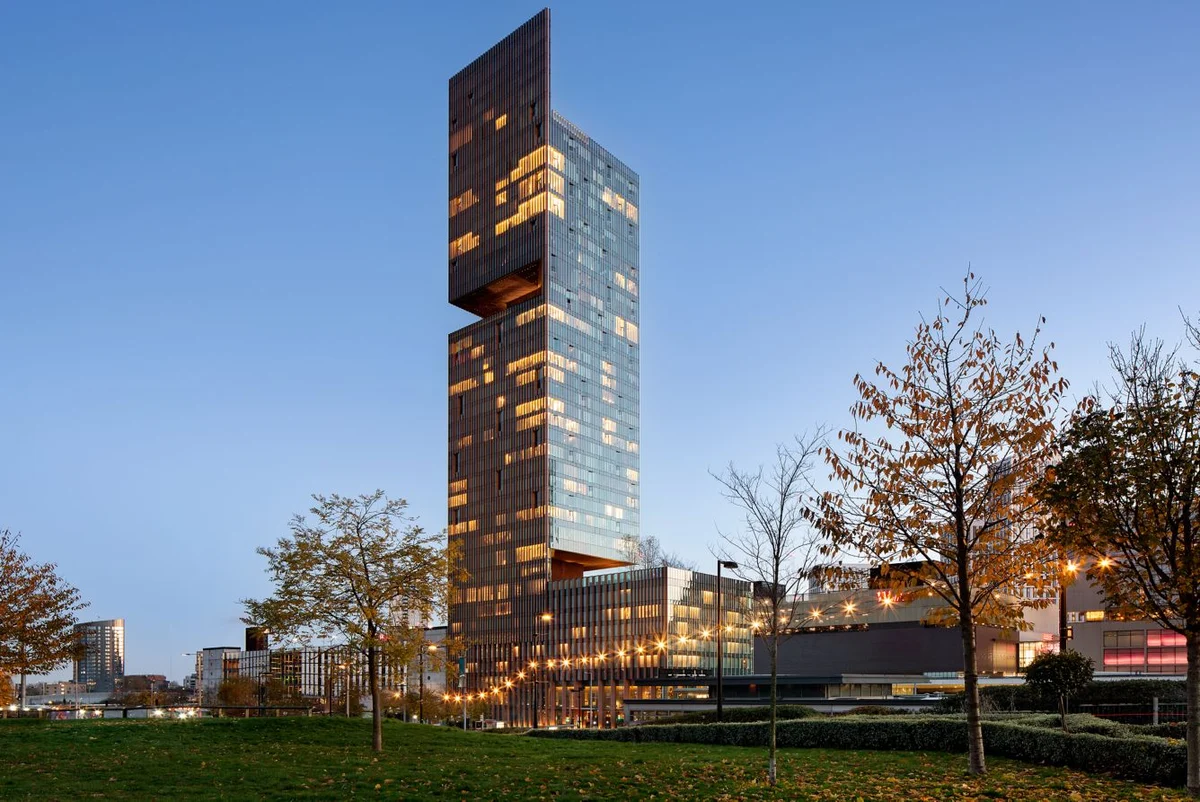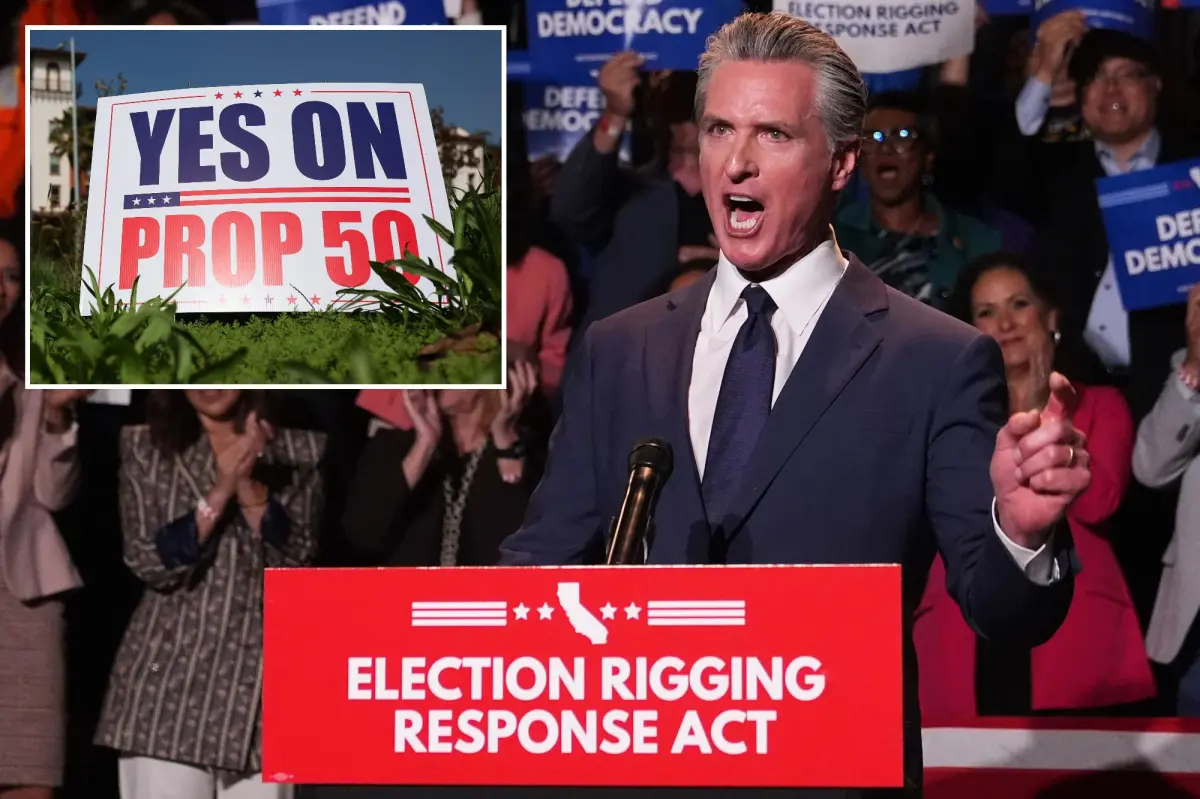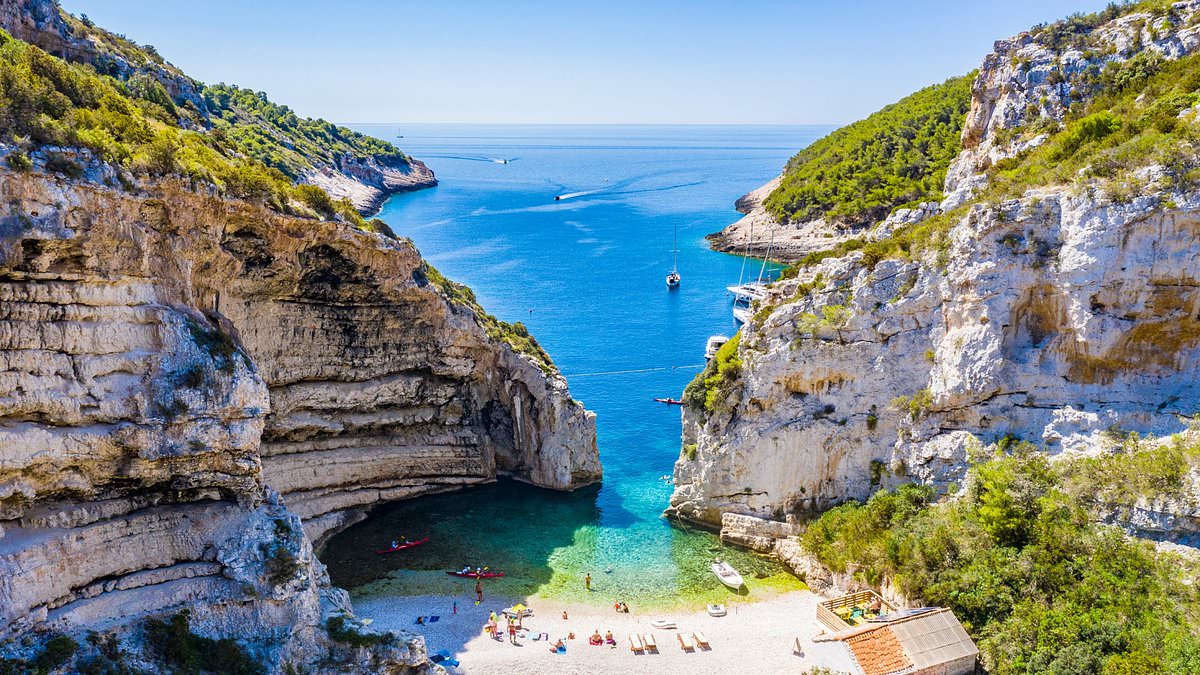Copyright standard

Stratford is not a place synonymous with culture. Formerly an industrial heartland thick with factories, the opening of the Westfield shopping centre in 2011, and the Olympic Park in 2012, revitalised this area of East London as a hub for shopping and sport. Now — a decade later — the area harbours loftier ambitions to become a new cultural hotspot, with the opening of the V&A East Storehouse and Sadler’s Wells East. But can somewhere Londoners head to buy Nikes and iced matcha also offer visitors artistic enlightenment? Leaving Stratford underground at night (19 minutes from Paddington on the Elizabeth line) the twinkling glass skyscrapers make it feel as though I have arrived in Dubai. Glittering edifices stretching to the sky; of which the hotel I am staying in is amongst the most impressive. The Stratford, in Marriott’s Autograph Collection (room rates start at £179 based on two sharing a double room), is a 42-floor russet tower designed by architects, SOM, behind the Burj Khalifa. The feeling of being transported to the UAE continues in the hotel’s rooftop Japanese restaurant Kokin, where floor to ceiling windows overlook this steely citadel. My friend and I eat dinner, presented with dishes exquisite as works of art: slithers of Sashimi amongst delicate flower arrangements, decorated with tiny petals; fatty morsels of perfect Wagyu beef and an elegant bottle of sparkling Jasmine tea, which tastes like Earl Grey that has had a T-total love child with champagne. Kokin, in style, execution and price, leans into the high-end culture to which Stratford now aspires, although it’s less clear how the rest of the hotel fits. The reception booms with a DJ spinning dance tunes; hoodies hang in our bedroom and the mini bar feels curated by an 18-year-old, offering Stratford Pilsner, Watermelon fizz sweets and a passionfruit energy drink. Although a card in the room tells guests they can “plant a seed at The Stratford” amongst the urban positioning, the effort feels a little tokenistic. The next morning, our cultural urban safari begins — starting at the ArcelorMittal Orbit: A vast twisting 376-foot red tower designed by Turner-winning artist, Sir Annish Kapoor. Its 360-viewing deck, 80-meters in the sky, overlooks surrounding iconic buildings: The London Aquatics Centre, Lee Valley’s VeloPark and the Copper Box Arena, which like Orbit are an urban legacy to the 2012 Olympic games. Kapoor complained that Boris Johnson forced him to add a slide to his sculpture, in an attempt to recoup its £19million cost. Doing so in collaboration with artist Carsten Holle, Kapoor turned a potential fair-ride into a creative encounter. On the world’s longest tunnel slide, you’re plunged into darkness, sent hurtling towards your own existence, in something of a physical existential crisis. East Bank is the nucleus of Stratford’s new cultural renaissance. Inspired by its namesake South Bank, it affects a similar Brutalist vibe, with boxy buildings housing the V&A, UAL, BBC and Sadlers Wells East punching up from the river bank. We peruse the stretch, from swan pedalos, drifting on the water, which to be fair is probably more delightful in summer. And walk past artist Michael Landy’s playful cockney rhyming slang installation. Later, at Sadler’s Wells, we watch an extraordinary performance by Marc Brew, a ballerina who profoundly reinvented his art after being made paraplegic in a car accident, working in collaboration with choreographer Sidi Larbi Cherkaoui (the genius behind Beyonce and Jay Z’s Apeshit video). At times, Stratford’s sleek minimalism and the sheer scale of its architecture feel alienating, and bleak — like LA without the sun. It also makes its promise as a culture epicentre feel somewhat inauthentic. Wonderful as it is that world-class venues have come here to Stratford, but it doesn’t have the soul or history of say, Soho or Shoreditch. Even perusing the eclectic Big Market on Riverside East, looking at upcycled printed T-shirts and hand-knitted neon tank tops, I was left feeling it was a drop of authenticity in a neo-liberal capitalist ocean. Yet, at the V&A East Storehouse (free entry), Stratford comes into its cultural element. The warehouse displays fragments of the V&A’s collection. We walk on steel bridges and transparent floors amongst glass cases in a startling, clever use of this industrial space. Being so close to items feels thrilling. An ornate carved ceiling from a palace in Torrijos sits beside a remanent of the Robin Hood Council estate; a 70s David Mellor steel chair and an 18th century Katana, and vast Picasso produced in 1924 as a theatrical front cloth for Ballets Russes. In the neighbouring David Bowie Centre, Ziggy Stardust costumes sit alongside handwritten Young Americans lyrics. Here, where Stratford leans into its urban heritage and finds a culture worth seeing — and suddenly makes sense as an artistic destination.



